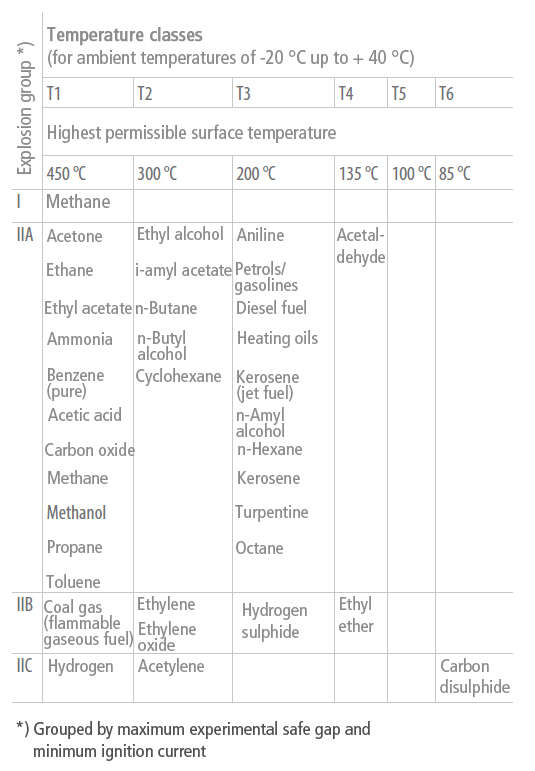Explosion protection
Explosion protection is concerned with avoiding the formation of hazardous gases, vapours, mists or dusts and, where this is not possible, with preventing potential explosions. To this end, there is integrated explosion protection, consisting of three parts.
Part 1 - primary explosion protection. This is aimed at preventing hazardous atmospheres. Part 2 - secondary explosion protection. This is concerned with preventing the ignition of hazardous explosive atmospheres.
Part 3 - tertiary explosion protection. This relates to stopping an explosion from spreading and limiting its effects. Explosion protection is a combination of technical solutions and legal provisions (also see ATEX). See Fig. 1 Explosion protection
Part 1 - primary explosion protection. This is aimed at preventing hazardous atmospheres. Part 2 - secondary explosion protection. This is concerned with preventing the ignition of hazardous explosive atmospheres.
Part 3 - tertiary explosion protection. This relates to stopping an explosion from spreading and limiting its effects. Explosion protection is a combination of technical solutions and legal provisions (also see ATEX). See Fig. 1 Explosion protection

Fig. 1 Explosion protection: Example of equipment marking (general)
Within the European Community, explosion protection is defined in the following directives: the Equipment Directive 94/9/EC (ATEX 95) and the Workplace Directive 99/92/EC (ATEX 137).
Explosion protection directives
- ATEX 95 regulates the features and characteristics of equipment. It provides manufacturers with a basis for producing explosion-proof products or equipment and therefore covers all pumps intended for use in hazardous areas.
- ATEX 137 stipulates the procedure for dealing with explosion hazards and provides operators with a basis for using systems and installations that are susceptible to explosions.
Equipment is sorted into hazard classes (and therefore into zones/categories) as well as into explosion groups/temperature classes by approval bodies such as the Trade Inspection Office or German TÜV (technical control board).
It is the operator that specifies the zones and temperature classes for the equipment manufacturer. EN 1127-1 evaluates explosion hazards on the basis of zones and categories. See Fig. 2 Explosion protection

Fig. 2 Explosion protection: Product category
The operating limits and permissible operating temperatures are specified by the equipment manufacturer e.g. in the form of operating instructions and a technical data sheet. See Fig. 3 Explosion protection

Fig. 3 Explosion protection: Examples of subdividing gases and vapours in explosion groups and temperature classes
Types of protection involve a set of design principles for explosion-proof equipment that are meant to avoid the ignition of an explosive atmosphere.
They are available for both electrical and non-electrical equipment. See Fig. 4 Explosion protection

Fig. 4 Explosion protection: Types of protection for electrical and non-electrical operating equipment
Influence of temperature based on the example of a pump
Drives(opens in a new tab) for close-coupled pumps must be designed for high ambient temperatures because the drive lantern and shaft transfer the temperature of the fluid handled to the motor.
If we disregard the motor, the highest temperatures to occur during normal operation are to be anticipated on the surface of the pump casing, on the shaft seal and in the area of the bearings. The surface temperature at the pump casing corresponds to the temperature of the fluid handled.
If the pump is heated in addition, the operator of the system is responsible for observing the specified temperature class and fluid temperature (operating temperature).
